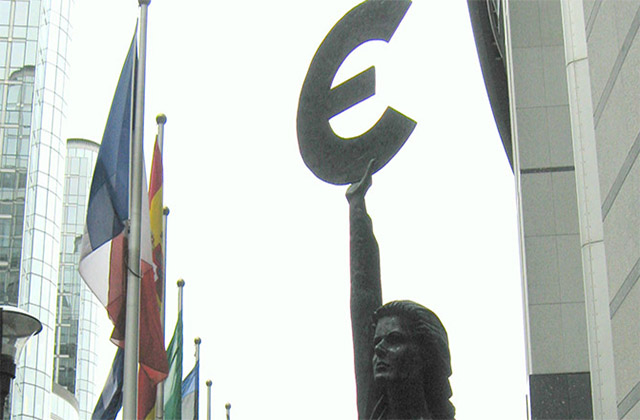The eurozone’s year-on-year inflation rate stood at 8.5% in February, down one tenth of a percentage point from January, according to Eurostat, the EU’s statistical office, while the underlying rate, which excludes the effect of energy and food, climbed to a record 5.6%.
In this way, the year-on-year inflation rate in the euro area accumulates four consecutive months of deceleration and stood at its lowest level since May 2022, before the European Central Bank (ECB) began to raise interest rates.
In the European Union (EU) as a whole, the year-on-year inflation rate stood at 9.9% in February, one tenth of a percentage point lower than the rise in prices in January, also marking the fourth monthly decline in the inflation reading.
Among EU countries, the lowest inflation rates were observed in Luxembourg (4.8%), Belgium (5.4%) and Spain (6%), while the highest increases were recorded in Hungary (25.8%), Latvia (20.1%) and the Czech Republic (18.4%).
Rise in core inflation
In February, the rise in energy prices in the euro area moderated to 13.7% from 18.9% in January, while the increase in fresh food prices was 13.9%, up from 11.3% last month.
Likewise, services rose by 4.8% year-on-year, four tenths more than in January, and non-energy industrial goods rose by 6.8%, one tenth more than in the previous month.
Excluding the impact of energy, the year-on-year inflation rate in the euro area stood at 7.8% in February, compared with 7.3% in January.
Moreover, when the effect of fresh food, alcohol and tobacco prices is also excluded, the underlying inflation rate in the euro area rose to 5.6% from 5.3% in January, its highest level in the historical series.
ECB forecasts
The ECB’s new forecast, which yesterday raised rates by 50 basis points to 3.50%, expects inflation to average 5.3% in 2023, down from 6.3% in December 2022, while in 2024 the rise in prices will be 2.9%, half a point lower than previously expected, and in 2025 inflation will be 2.1%, still above the target of 2%, but two tenths better than previously anticipated.
Despite this downward revision, the ECB warned that underlying inflationary pressures remain strong, as the rate of inflation excluding energy and food continued to rise in February and ECB staff expect it to average 4.6% in 2023, higher than estimated in the December projections.
Thereafter, this underlying rate would fall to 2.5% in 2024 and 2.2% in 2025, as upward pressures from past supply shocks and the reopening of the economy gradually fade and as monetary policy tightening increasingly dampens demand.





